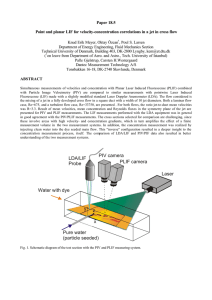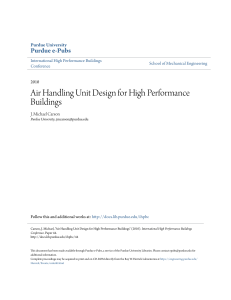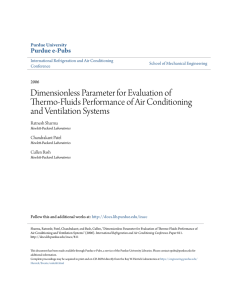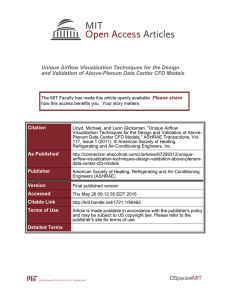Combining 3D PIV and 3D LDA to Map the Flow... Automotive Air Handling Unit
advertisement
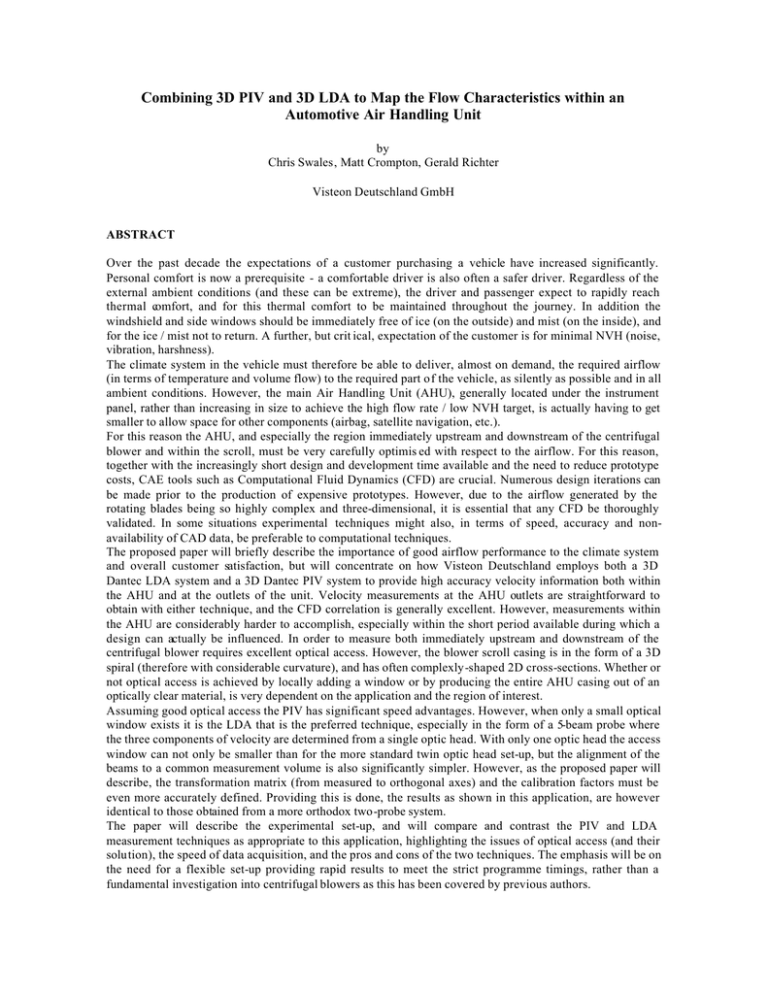
Combining 3D PIV and 3D LDA to Map the Flow Characteristics within an Automotive Air Handling Unit by Chris Swales, Matt Crompton, Gerald Richter Visteon Deutschland GmbH ABSTRACT Over the past decade the expectations of a customer purchasing a vehicle have increased significantly. Personal comfort is now a prerequisite - a comfortable driver is also often a safer driver. Regardless of the external ambient conditions (and these can be extreme), the driver and passenger expect to rapidly reach thermal comfort, and for this thermal comfort to be maintained throughout the journey. In addition the windshield and side windows should be immediately free of ice (on the outside) and mist (on the inside), and for the ice / mist not to return. A further, but crit ical, expectation of the customer is for minimal NVH (noise, vibration, harshness). The climate system in the vehicle must therefore be able to deliver, almost on demand, the required airflow (in terms of temperature and volume flow) to the required part of the vehicle, as silently as possible and in all ambient conditions. However, the main Air Handling Unit (AHU), generally located under the instrument panel, rather than increasing in size to achieve the high flow rate / low NVH target, is actually having to get smaller to allow space for other components (airbag, satellite navigation, etc.). For this reason the AHU, and especially the region immediately upstream and downstream of the centrifugal blower and within the scroll, must be very carefully optimis ed with respect to the airflow. For this reason, together with the increasingly short design and development time available and the need to reduce prototype costs, CAE tools such as Computational Fluid Dynamics (CFD) are crucial. Numerous design iterations can be made prior to the production of expensive prototypes. However, due to the airflow generated by the rotating blades being so highly complex and three-dimensional, it is essential that any CFD be thoroughly validated. In some situations experimental techniques might also, in terms of speed, accuracy and nonavailability of CAD data, be preferable to computational techniques. The proposed paper will briefly describe the importance of good airflow performance to the climate system and overall customer satisfaction, but will concentrate on how Visteon Deutschland employs both a 3D Dantec LDA system and a 3D Dantec PIV system to provide high accuracy velocity information both within the AHU and at the outlets of the unit. Velocity measurements at the AHU outlets are straightforward to obtain with either technique, and the CFD correlation is generally excellent. However, measurements within the AHU are considerably harder to accomplish, especially within the short period available during which a design can actually be influenced. In order to measure both immediately upstream and downstream of the centrifugal blower requires excellent optical access. However, the blower scroll casing is in the form of a 3D spiral (therefore with considerable curvature), and has often complexly-shaped 2D cross-sections. Whether or not optical access is achieved by locally adding a window or by producing the entire AHU casing out of an optically clear material, is very dependent on the application and the region of interest. Assuming good optical access the PIV has significant speed advantages. However, when only a small optical window exists it is the LDA that is the preferred technique, especially in the form of a 5-beam probe where the three components of velocity are determined from a single optic head. With only one optic head the access window can not only be smaller than for the more standard twin optic head set-up, but the alignment of the beams to a common measurement volume is also significantly simpler. However, as the proposed paper will describe, the transformation matrix (from measured to orthogonal axes) and the calibration factors must be even more accurately defined. Providing this is done, the results as shown in this application, are however identical to those obtained from a more orthodox two-probe system. The paper will describe the experimental set-up, and will compare and contrast the PIV and LDA measurement techniques as appropriate to this application, highlighting the issues of optical access (and their solution), the speed of data acquisition, and the pros and cons of the two techniques. The emphasis will be on the need for a flexible set-up providing rapid results to meet the strict programme timings, rather than a fundamental investigation into centrifugal blowers as this has been covered by previous authors.

